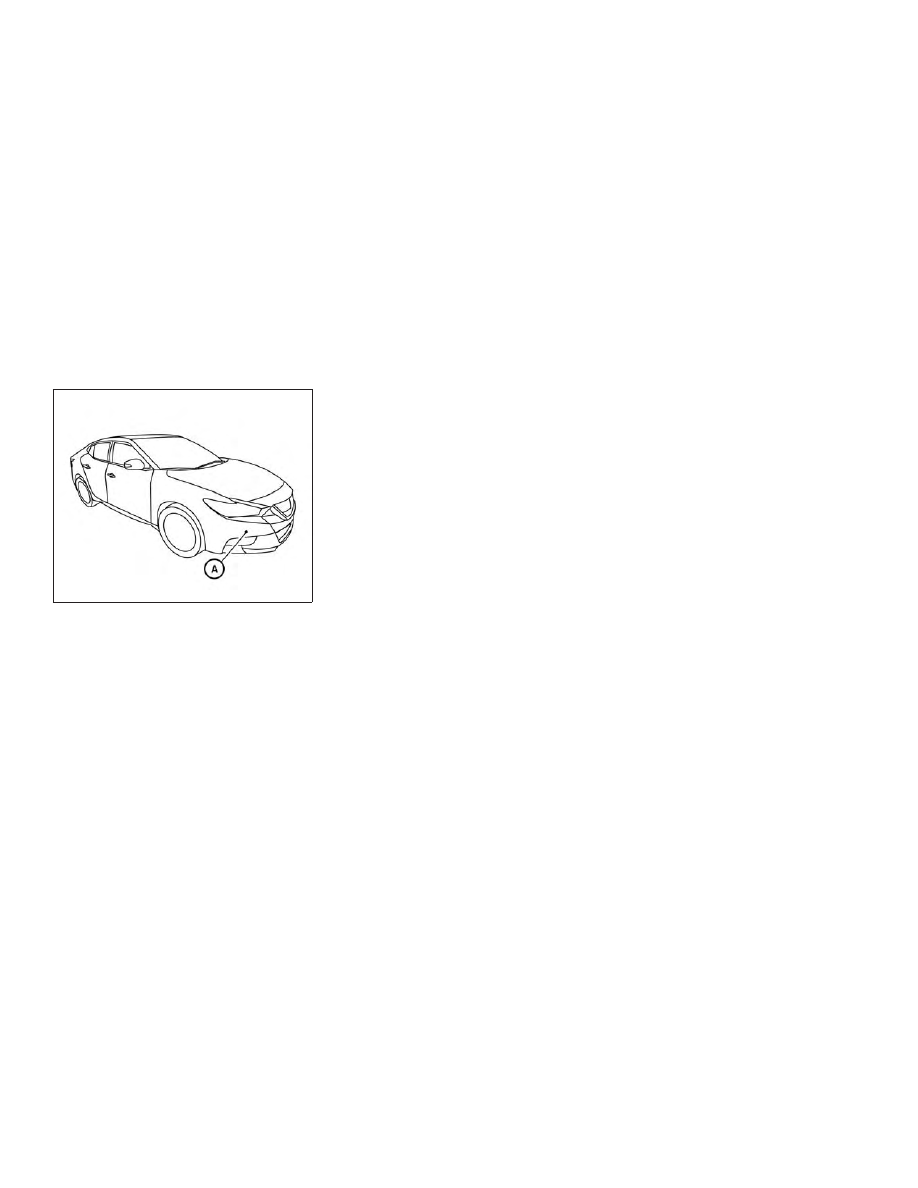Nissan Maxima (2018 year). Instruction - part 18

SYSTEM MAINTENANCE
The sensor for the ICC system
䊊
A
is located
on the front of the vehicle.
To keep the ICC system operating properly,
be sure to observe the following:
∙ Always keep the sensor area clean.
∙ Do not strike or damage the areas
around the sensor. Do not touch or re-
move the screw located on the sensor.
Doing so could cause a failure or mal-
function. If the sensor is damaged due
to an accident, it is recommended that
you visit a NISSAN dealer.
∙ Do not attach a sticker (including trans-
parent material) or install an accessory
near the sensor. This could cause failure
or malfunction.
∙ Do not attach metallic objects near the
sensor area (brush guard, etc.). This
could cause failure or malfunction.
∙ Do not alter, remove, or paint the front
bumper. Before customizing or restor-
ing the front bumper, it is recom-
mended that you visit a NISSAN dealer.
Radio frequency statement
FCC Notice
For USA
This device complies with part 15 of the FCC
Rules.
Operation is subject to the following two
conditions:
1. This device may not cause harmful in-
terference, and
2. This device must accept any interfer-
ence received, including interference
that may cause undesired operation.
FCC Warning
Changes or modifications not expressly
approved by the party responsible for
compliance could void the user’s authority
to operate the equipment.
This equipment has been tested and found
to comply with the limits for a Class A digi-
tal device, pursuant to Part 15 of the FCC
Rules. These limits are designed to provide
reasonable protection against harmful in-
terference when the equipment is oper-
ated in a commercial environment. This
equipment generates, uses, and can radi-
ate radio frequency energy and, if not in-
stalled and used in accordance with the
instruction manual, may cause harmful in-
terference to radio communication. Op-
eration of this equipment in a residential
area is likely to cause harmful interference
in which case the user will be required to
correct the interference at his own ex-
pense.
Radio Frequency Radiation Exposure Infor-
mation: This equipment complies with FCC
radiation exposure limits set forth for an
uncontrolled environment. This equipment
should be installed and operated with
minimum distance of 20 cm between the
radiator and your body.
LSD2367
Starting and driving
5-57